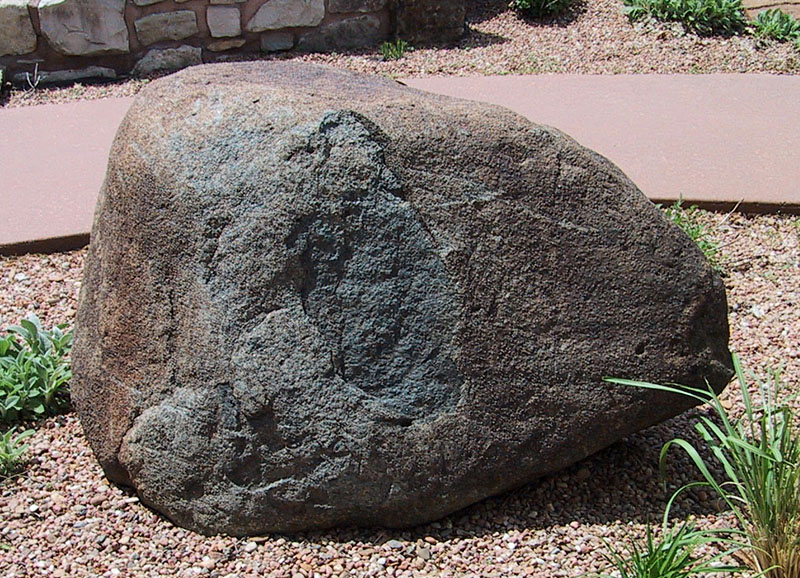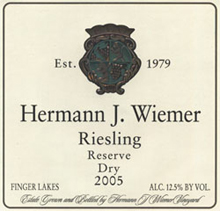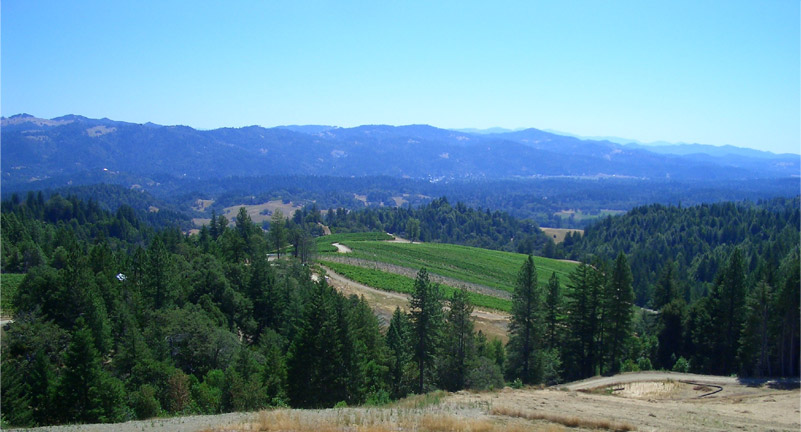The following impressions were collected over a couple two hour walk around sessions during the Hospice du Rhone. Considering the environment, my propensity to babble on w/ winemakers & the frenetic pace of each event, my notes aim to capture a bit broader stroke than the typically pedantic wine prose to which you may be accustomed. My penmanship deteriorated as the afternoon’s progressed, as did the content of my impressions. My hopes are that this preface suffices as an adequate apology for the shortcomings of the following:
·
Clos St. Jean: In addition to the behemoths that were sampled during the seminar, Vincent poured his ‘08s, a vintage destined for obscurity, caught in the vortex of the ’07-’09 tornado. The Vieilles Vignes showed very well, w/ forward fruit in an immediately complex package. The palate was augmented by a wily spice note & framed by well rounded tannins. If the price is right, the balance of this young wine should provide for great drinking early in the game. The Deus Ex Machina & Combe des Fous suffered a bit from high extraction syndrome- all thrust & not enough raw materials to fill out their stocky shoulder pads. The bittersweet cocoa & espresso notes were there, but each cuvee displayed a level of grit that I had yet to experience from either. ’08 will likely be a year to avoid Clos St. Jean’s luxury cuvees, save for an unlikley discounting freefall.
·
Domaine de la Sol itude
itude: Perhaps the least represented great producer in my Rhone-centric cellar. My excuse? Idiocy. I plead hollow cranial disease, particularly in regards to the cuvee Barberini, pound for pound one of the most under-rated wines of the appellation. The ’04 showed brilliantly w/ its peppery, velvet textured palate displaying equal sides of grace & power at this stage of its evolution (94 points). The ’07 Blanc was solid (89 points), but a mere afterthought once the elephantine Secret de Solitude ’07 passed my lips. The superlatives were super-elementary and might as well be distilled into recess garbles of ‘totally awesome’ and ‘wicked great dude’ and ‘stuff rocks man’ nonsense, as the overwhelming intensity of the wine battered my dissection of the wine’s characteristics to sophomoric dribble. Gorgeous young trophy wine, and a genuine trophy she is (99 points). The Cuvee Constanza (originated in the ’05 vintage, 100% Grenache aged in 80% tank, 20% wood barrels) demonstrated just how dramatically different the ’05 vintage is from ’07, particularly at this stage in development. The ’05 had a taut, sinewy spine that was wrapped in a great wall of tannin- China style, while the ’07 was an enveloping, lush siren, pillowed impressively in sweet Grenache baby fat (95+ and 97 points respectively).
·
La Nerthe: One of my favorite white Rhones year in; year out has to be from La Nerthe, w/ their ’09 CDP blanc generating all that Chenin Blanc-like character I’ve come to expect from the house. Aromatics of green tea, persimmon and baked apple were backed by a lilting, zingy palate that kept freshness at the forefront (92 points). The ’07 Chateauneuf du Pape Rouge echoed just the reminder I needed regarding the vintage: buy cheap cuvees by the truckload. Just a beautifully poised, round young Chateauneuf du Pape w/ all the depth of flavor you’d hope for in the Cuvee des Cadettes (sans the oak) & a style that likely will be most flattering over the first dozen years of its existence (94 points).
·
Domaine de Barroche: The two traditional cuvees from Barroche contrasted the ’08 & ’07 vintages nicely, w/ the ’08 shaded in a floral, elegant frame lifted by easy delineation and harmony. The ’07, on the other hand, blackened to the core, brooding & bubbling over a powerful fist of fruit that trumped the anthropometrics of the ’08 in terms of length & breadth, reminding me how opulence can overwhelm charm at a tasting such as this, like bringing a knife to a gunfight (92 and 95 points respectively).
·
Domaine Cristia: The 3 offerings from Cristia were tri-polar, filling out one of the most awkward wine geometries imaginable. The ’06 Vieilles Vignes, a pure Grenache cuvee, must have been the inspiration for Justin Smith’s ‘Rocket Block’ nomenclature, as it was a flat out rocket blast of fruit, rifling through spades of kirsch, fruitcake & sweet licorice notes as if touched off by high energy dynamite. This fantastic, scintillating ride is well worth the amusement park line wait & is simply uncanny for an ’06 (96 points). The Renaissance ’05 was an inevitable drop-off, though I didn’t imagine the drop would cover such ladders of altitude. The wine was a grapey monolithic mess, disjointed at oblique angles and puckered to an astringent clip. I have no idea what was cooking w/ this showing but let’s cross our fingers and toes and chalk it up to ’05 structural awkwardness. Phasic. The Quartz, ’07, had no such excuse, yet was equally awkward in its unyielding, compressed profile that was far too tight-lipped to utter a sound. I do not know if this was a late bottled version, but ‘07s don’t tend to be shy, rather they trend in a 180 degree direction.
o Note. Justin Smith likely did not name his Rocket Block after the Domaine Cristia VV ’06. In fact, it would be chronologically impossible for him to do so, considering his Rocket Block originated before said vintage of said wine was hatched. I have not discussed the naming of Rocket Block w/ Justin during any occasion, past or present. I disclaim everything and fabricate anything.
·
Yves Cuilleron: One of Neal Rosenthal’s more modern imports, Cuilleron’s Condrieus have always been impressive w/ their bright, flashy expressions of Viognier fruit, w/ the ’07 Vertige firing on a powerfully opulent angle for the region. What impressed me most w/ Cuilleron is the progress he’s made w/ his Northern Rhone reds, as his Saint Joseph Serine (an appellation the performed particularly well in ’07 based on these tastings) achieved a confluence of seamlessness & savagery. In spite of its beefy nerve it was wrapped in a burnished texture that made it instantly approachable. As for the Cote Rotie, Terres Sombre ’07, it was a much more backward, cellar-worthy red, with notes of bay leaf & spicy graphite holding sway over its tight tendons of dark fruit. His wines; both white and red, are expressive, plump vixens that cover an opposing stylistic ground to Villard.
·
Yves Gangloff: The biggest tease of the tasting came from Gangloff in the shape of a 2 case import, Saint Joseph. Its production & distribution might as well make it a 100 foot plot in some obscure Burgundy appellation, yet Domaine Gangloff had the audacity to pour their diminutively produced bauble at Hospice, which was an ’08 that came damn close in quality & form to the ’04 Chave Hermitage Blanc we’d gulped through at lunch. There’s such limited supply that I doubt I’ll find anyone who’s tasted it to disagree w/ me on its merits, but let me make a not so unobvious plea to the Domaine to either ramp up production (this was their first vintage), extend their reach overseas or simply stop pouring this sauce in places that can’t access it, ie: America. Anyways, the ’08 Condrieu was a sensuous walk through the tropics, with soaring perfume and a lush, apricot inflected palate. The ’06 La Barbarine, Cote Rotie, was an absolute beauty. While I’ve generally considered this vintage to be a bit of a ballerina, this showpiece was loaded, w/ a concentrated wedge of white pepper, mesquite smoke & beefy currant notes that fanned out in long, lush, symmetrical tiers. Out of all the Cote Roties I’d sampled through, this was the most salivatory (next to Ogier), 96 points. The wordplay award goes to team Gangloff for their Santa Barbarine, a Santa Barbara county take on the aforementioned Cote Rotie. Kunin provided the territorial acuity for the project (which I believe is sourced from a vineyard previously owned by Andrew Murray), with the ’07 toeing the line between both worlds Old & New. The nose mixes animal & intensity, with an array of road tar, licorice, cassis & funky unmentionables that neck up & down the spice rack of the kitchen. The round generosity & warmth of the palate is all Santa Barbara, but what really compelled was the outrageous encore, taking shape in a long, multi-dimensional finish which sparked a bitter chocolate bite. The ’06 was even broader & deeper- which could arguably be credited to bottle ageing as much as the distinction between vintages. Gangloff’s dazzling New World joint venture was as much the talk of the floor as any during the big tent tastings at Hospice and deservedly so. I pegged both wines for mid 90’s ratings.
·
Francois Villard: Was there a more enjoyable tasting table than Francois Villard’s? Probably not, considering the guy seemingly makes dozens of different wines (all of which rock like a mineral). The ’08 Version, St. Peray, A Marsanne that takes tang to a new level, cackling away w/ green tea, blanched almond & honey notes that cut through the palate like a switchblade, leaving the mouth watering for another sip. The Mairlant, a 70/30 Marsanne/Roussanne blend, picks up the zip where the St. Peray left off, tucking in quite a bit of nuance to its bony frame. Moving to Francois’s Viogniers, the best deal of the house has to be his Les Conto

urs de Deponcins VDP ’08, full of peaches ‘n cream & baked apple flavors that snap up & down the tongue to a fresh finish w/ pronounced clarity & drive. The diamonds of Villard’s collection come in the shape of 3 Condrieu’s: Deponcins, Les Gran Vallon & Les Terrasses Du Palat. The ’08 group, beginning w/ Les Terrasses, shows the flesh & thickness of a Cuilleron, yet w/ hairpin focus & poise, extending to the long, almost ethereal finish. Les Gran Vallon ratcheted up the depth a bit, yet my favorite of the bunch, the De Poncins, had a crunchy, almost severe minerality that buttressed the sparkling tiers of bright licorice & exotic green fruit flavors (92, 93, 94 points, respectively). Again, the ’07 St. Josephs show that they’re a force to be reckoned w/, as the Reflet proved to be the most dynamic & nimble of Villard’s bunch, showing fascinating tar & spice notes throughout its complex, seamless frame. Not to be outdone in the joint venture department by Gangloff, Villard has teamed up w/ Dave Miner (HDR’s person of the year in 2010) to create ‘La Diligence,’ Stagecoach vineyard picked Marsanne & Syrah wines that are also worthy of a wine-search for Rhone enthusiasts. Tablas Creek was onto something w/ this whole Frenchofornian Paso thing…
As an aside, our sips and slurps stumbled a bit when the Cotes du Rhone girls walked through the room, scantily adorned in black & red sultry-wear, perhaps metaphorically hinting at the formerly beleaguered region’s current sex appeal. Lipstick wearing Grenache blends may be a new marketing trend, aimed to compete globally w/ Australian Kangroos, Cape taboos & Californian tattoos, but I’d be lying if I didn’t mention that they’re designer perfume came off smelling a bit cheap.
I’ll splice in the New World Rhone blends on the next installment, allowing you some time to digest. In totality, wines were universally impressive from either side of the pond, though I do have to couch that appraisal w/ the fact that the Franco-contingency was well represented by almost exclusively top tier producers (and my snobby eyes tend to gravitate to the best).


























